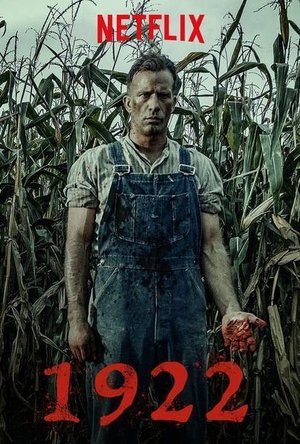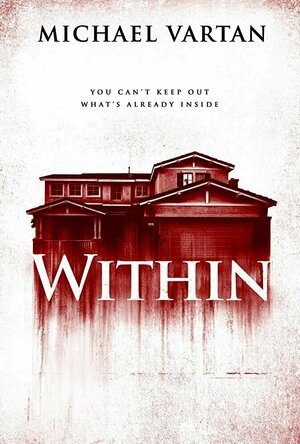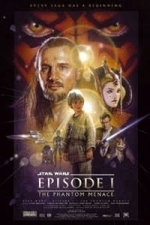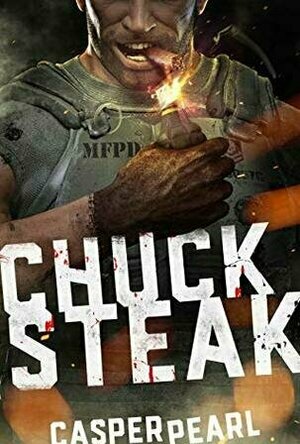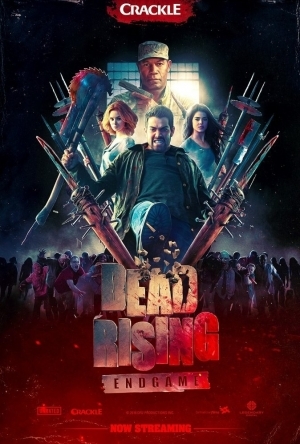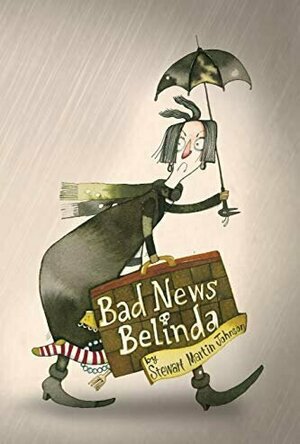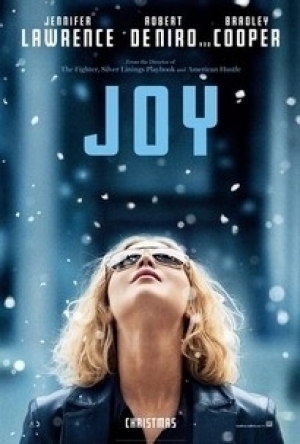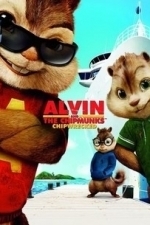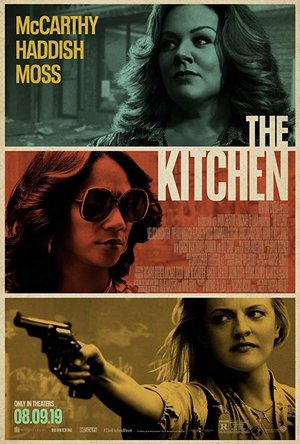Search
Search results
Darren (1599 KP) rated 1922 (2017) in Movies
Jun 20, 2019
Story: 1922 starts as Wilfred James (Jane) is about to lose part of his property to his wife Arlette (Parker), Wilfred doesn’t want to lose the farmland he has raised his son Henry (Schmid) on and wants to come up with a way to keep all the land.
Wilfred’s plan is to get his son to help him murder Arlette, to get the financial gain of taking ownership of the property. The guilt of what he did only ends up driving Wilfred crazy here as the mental state start to unfold.
Thoughts on 1922
Characters – Wilfred is a farmer and father that doesn’t want to leave his farm, he designs a plan to get that as he looks to stay but soon his mind starts slipping into insanity. Arlette is the wife that wants to move away but has to overcome the husband’s decision not to, only to find herself murdered and visiting him in ghost form. Henry is the son that helps with the cover up, but soon goes out on his own to learn the harsh reality of the world.
Performances – Thomas Jane does give us a good performance in this film, but the rest of the cast are just ok, none of the performances drag us into the film in any way to see where it will end up going.
Story – The story was hard to follow, I think the idea is that one man loses everything because of killing his wife, the problem is that this is an incredibly slow-moving film that doesn’t seem to go very far or have any redeemable qualities. Is gets caught in the middle of a breakdown and a supernatural movie without being set on one that could make either feel stronger.
Crime/Horror/Mystery – There was a crime as it leads to a cover up of a murder which leads to the horror involved in the story as the past comes to haunt Wilfred.
Settings – The settings do fit the time in question which is fine but nothing stands out as the best of the best.
Special Effects – The effects are good when used but the film doesn’t just turn to effects to make things happen.
Scene of the Movie – Final Scene.
That Moment That Annoyed Me – It was so so so so slow.
Final Thoughts – Well this is one of the dullest movies of the year, it has nothing happening for the most part and for a Stephen King spin it only disappoints.
Overall: Boring is being polite.
https://moviesreview101.com/2017/10/24/1922-2017/
Wilfred’s plan is to get his son to help him murder Arlette, to get the financial gain of taking ownership of the property. The guilt of what he did only ends up driving Wilfred crazy here as the mental state start to unfold.
Thoughts on 1922
Characters – Wilfred is a farmer and father that doesn’t want to leave his farm, he designs a plan to get that as he looks to stay but soon his mind starts slipping into insanity. Arlette is the wife that wants to move away but has to overcome the husband’s decision not to, only to find herself murdered and visiting him in ghost form. Henry is the son that helps with the cover up, but soon goes out on his own to learn the harsh reality of the world.
Performances – Thomas Jane does give us a good performance in this film, but the rest of the cast are just ok, none of the performances drag us into the film in any way to see where it will end up going.
Story – The story was hard to follow, I think the idea is that one man loses everything because of killing his wife, the problem is that this is an incredibly slow-moving film that doesn’t seem to go very far or have any redeemable qualities. Is gets caught in the middle of a breakdown and a supernatural movie without being set on one that could make either feel stronger.
Crime/Horror/Mystery – There was a crime as it leads to a cover up of a murder which leads to the horror involved in the story as the past comes to haunt Wilfred.
Settings – The settings do fit the time in question which is fine but nothing stands out as the best of the best.
Special Effects – The effects are good when used but the film doesn’t just turn to effects to make things happen.
Scene of the Movie – Final Scene.
That Moment That Annoyed Me – It was so so so so slow.
Final Thoughts – Well this is one of the dullest movies of the year, it has nothing happening for the most part and for a Stephen King spin it only disappoints.
Overall: Boring is being polite.
https://moviesreview101.com/2017/10/24/1922-2017/
Darren (1599 KP) rated Within (2016) in Movies
Oct 24, 2019
Characters – John is the father of the house, we know he has been on hard times and this house is all he can afford for his family. He does love both his wife and daughter and is trying to teach his daughter a lesson after her mistakes have led them to this location. Hannah is his daughter of John that has been getting herself in trouble which caused the move, she is grounded and is the first one to notice the strange events around the house. Melanie is the new wife and step-mother to Hannah, she doesn’t do much beyond the normal, which is mostly trying to be the best friend in her time of need. Ray is the creepy neighbour that offers to help change the locks, less we say about him the better.
Performances – When we look at the performances in this film we must be praising Erin Moriarty as she is excellent in her role, the weaknesses come from the parental characters, Michael Vartan and Nadine Velazquez who both don’t seem to do much with their roles in the film.
Story – The story here follows the family that move into a new home only to start seeing strange things happening and we fall in the, ‘creepy person living in the attic’ sub-genre, which is one that I feel is getting tiresome, there is only so much you can do while telling this story and if we are being honest we have seen it done on better levels before. The build up follows the checklist and by the end of the film the story just feels like it is trying to hard to be different, rather than good.
Horror – The horror in the film comes from the idea that someone could be living in your house, it is an easy idea for because being haunted in your own home should be working, though this misses the tension required for the film.
Settings – The film is set entirely inside the one house, which is all we need as this keeps the film contained for the maximum levels of horror, even if they don’t use it well.
Special Effects – The effects for the most part are good with the kills looking extra brutal when they hit.
Scene of the Movie – The first meeting of David.
That Moment That Annoyed Me – We have seen this too much.
Final Thoughts – This is a by the books horror that doesn’t test the audience enough, it has an easy out which doesn’t get used at all, though the killer does look creepy throughout.
Overall: Been here seen this.
Performances – When we look at the performances in this film we must be praising Erin Moriarty as she is excellent in her role, the weaknesses come from the parental characters, Michael Vartan and Nadine Velazquez who both don’t seem to do much with their roles in the film.
Story – The story here follows the family that move into a new home only to start seeing strange things happening and we fall in the, ‘creepy person living in the attic’ sub-genre, which is one that I feel is getting tiresome, there is only so much you can do while telling this story and if we are being honest we have seen it done on better levels before. The build up follows the checklist and by the end of the film the story just feels like it is trying to hard to be different, rather than good.
Horror – The horror in the film comes from the idea that someone could be living in your house, it is an easy idea for because being haunted in your own home should be working, though this misses the tension required for the film.
Settings – The film is set entirely inside the one house, which is all we need as this keeps the film contained for the maximum levels of horror, even if they don’t use it well.
Special Effects – The effects for the most part are good with the kills looking extra brutal when they hit.
Scene of the Movie – The first meeting of David.
That Moment That Annoyed Me – We have seen this too much.
Final Thoughts – This is a by the books horror that doesn’t test the audience enough, it has an easy out which doesn’t get used at all, though the killer does look creepy throughout.
Overall: Been here seen this.
LeftSideCut (3776 KP) rated Star Wars: Episode I – The Phantom Menace (1999) in Movies
Nov 8, 2019
I genuinely find The Phantom Menace really hard to review.
I was 11 years old when it came out in cinemas, and I of course absolutely loved it, and I did for a good few years.
As I grew older, it became apparent that the original Star Wars trilogy was a set of films that truly stood the test of time, a statement that doesn't hold true to the prequel films, but when I look back on Episode I in particular, it's a huge part of the Star Wars that I grew up with, so I really can't hate on it too aggressively!
Episode 1 is undeniably geared towards a younger audience. It has a pretty basic script, colourful characters, low brow humour, and is dripping with CGI. This direction is a huge part of it's downfall, with infamous characters like Jar Jar Binks being a big source of fan contempt. Likewise, young Anakin Skywalker was also not received well by a lot of fans, a character geared towards the young audience TPM is aimed at, and so unbelievably far away from the iconic villain he will eventually become.
A big part of Episode I that I personally dislike is the need to give a backstory to everything. An example of this is the scientific explanation behind The Force, taking away the mystical side of it. (I'm also not a huge fan of C3-PO being built by a pre-adolescent Darth Vader, but here we are)
The above mentioned CGI is completely overloaded. It's aged pretty badly when it comes to characters like the Gungans, and is a far cry from the practical effects and sets of the original trilogy.
Saying all this though, there is still a load of stuff I love about TPM, and I don't care what you think...
Ewan McGregor is great casting as a young Obi-Wan Kenobi, and is the beating heart of this whole trilogy.
I also like Liam Neeson as Qui-Gon.
It gets a lot of flack, but I love the pod race scene (sue me) and then of course, Darth Maul. No backstory is given here, just a badass Sith Lord with a dual ended lightsaber, and that's all we need to know.
The Phantom Menace, isn't the most gracious start to the chronological Star Wars story, but it still has an odd sort of charm and it's certainly not the worst Star Wars film out there.
To be honest, I lost count a long time ago in regards to how many times I've seen it, and dammit, I'll watch it again 🖕
I was 11 years old when it came out in cinemas, and I of course absolutely loved it, and I did for a good few years.
As I grew older, it became apparent that the original Star Wars trilogy was a set of films that truly stood the test of time, a statement that doesn't hold true to the prequel films, but when I look back on Episode I in particular, it's a huge part of the Star Wars that I grew up with, so I really can't hate on it too aggressively!
Episode 1 is undeniably geared towards a younger audience. It has a pretty basic script, colourful characters, low brow humour, and is dripping with CGI. This direction is a huge part of it's downfall, with infamous characters like Jar Jar Binks being a big source of fan contempt. Likewise, young Anakin Skywalker was also not received well by a lot of fans, a character geared towards the young audience TPM is aimed at, and so unbelievably far away from the iconic villain he will eventually become.
A big part of Episode I that I personally dislike is the need to give a backstory to everything. An example of this is the scientific explanation behind The Force, taking away the mystical side of it. (I'm also not a huge fan of C3-PO being built by a pre-adolescent Darth Vader, but here we are)
The above mentioned CGI is completely overloaded. It's aged pretty badly when it comes to characters like the Gungans, and is a far cry from the practical effects and sets of the original trilogy.
Saying all this though, there is still a load of stuff I love about TPM, and I don't care what you think...
Ewan McGregor is great casting as a young Obi-Wan Kenobi, and is the beating heart of this whole trilogy.
I also like Liam Neeson as Qui-Gon.
It gets a lot of flack, but I love the pod race scene (sue me) and then of course, Darth Maul. No backstory is given here, just a badass Sith Lord with a dual ended lightsaber, and that's all we need to know.
The Phantom Menace, isn't the most gracious start to the chronological Star Wars story, but it still has an odd sort of charm and it's certainly not the worst Star Wars film out there.
To be honest, I lost count a long time ago in regards to how many times I've seen it, and dammit, I'll watch it again 🖕
Phil Leader (619 KP) rated Chuck Steak in Books
Nov 11, 2019
Remember those action movies from the 80s and 90s? The ones where the chisel-jawed hero catches the bad guy via a convoluted and improbable plot, over the top action scenes and mass collateral damage? Chuck Steak doesn't just remember them. He IS them.
Maverick stop-at-nothing-even-if-it-causes-millions-of-dollars-of-damage-and-gets-me-suspended-again cop Chuck Steak (not the meat) has a new adversary. A bomb has been planted in his girlfriend and Chuck is being blackmailed into doing things he doesn't want to do, like be nice to his in-laws-to-be, become tolerant and accepting of minorities and work with a partner. He blunders through each increasingly ridiculous task, always managing it in unlikely ways, in the nick of time and causing maximum destruction in the process. But the mastermind behind the plan is always one step ahead. Has the apparently invincible Chuck Steak finally met his match?
First things first, this is in no way a serious book. As is fitting for the movie genre it is inspired by, everything is larger than life and twice as loud. There is however coherence to the plot (even though it does meander around for some gratuitous action scenes) and the twists, turns and red herrings thrown out in the final chapters as to who the villain is will certainly wrong foot many readers and in the end it does make some kind of sense.
There is also a subtext around acceptance of people who are different; Chuck and the police are portrayed very much as the intolerant knuckleheads of action movies, but his realisations that how he normally behaves could be grossly offensive provide some of the more striking moments of the book.
The prose is fast and loose, with flashbacks, changes of point of view and the occasional sub plot thrown in. The characterisation is bold, from the incredibly clichéd police captain to the more nuanced father in law. They bounce of each other in interesting ways and are each a key part of Chuck's journey. Some of the writing is a little cluttered and confused but that just adds to the feeling of this being a headlong rush to the final chapter.
80s and 90s action flicks were just 2 hours of pure escapist entertainment, never intended to be anything other than enormous fun. Chuck Steak captures the spirit of these well. An absolute riot to read.
Rated R for pretty much everything that makes things R rated
Maverick stop-at-nothing-even-if-it-causes-millions-of-dollars-of-damage-and-gets-me-suspended-again cop Chuck Steak (not the meat) has a new adversary. A bomb has been planted in his girlfriend and Chuck is being blackmailed into doing things he doesn't want to do, like be nice to his in-laws-to-be, become tolerant and accepting of minorities and work with a partner. He blunders through each increasingly ridiculous task, always managing it in unlikely ways, in the nick of time and causing maximum destruction in the process. But the mastermind behind the plan is always one step ahead. Has the apparently invincible Chuck Steak finally met his match?
First things first, this is in no way a serious book. As is fitting for the movie genre it is inspired by, everything is larger than life and twice as loud. There is however coherence to the plot (even though it does meander around for some gratuitous action scenes) and the twists, turns and red herrings thrown out in the final chapters as to who the villain is will certainly wrong foot many readers and in the end it does make some kind of sense.
There is also a subtext around acceptance of people who are different; Chuck and the police are portrayed very much as the intolerant knuckleheads of action movies, but his realisations that how he normally behaves could be grossly offensive provide some of the more striking moments of the book.
The prose is fast and loose, with flashbacks, changes of point of view and the occasional sub plot thrown in. The characterisation is bold, from the incredibly clichéd police captain to the more nuanced father in law. They bounce of each other in interesting ways and are each a key part of Chuck's journey. Some of the writing is a little cluttered and confused but that just adds to the feeling of this being a headlong rush to the final chapter.
80s and 90s action flicks were just 2 hours of pure escapist entertainment, never intended to be anything other than enormous fun. Chuck Steak captures the spirit of these well. An absolute riot to read.
Rated R for pretty much everything that makes things R rated
365Flicks (235 KP) rated Dead Rising: Endgame (2016) in Movies
Nov 20, 2019
There are a plethora of really shitty movies based on Games being released each year. None of them holding a candle to the source material it is based on. However each and every time I get suckered in because I want to be impressed by these attempts, as a movie fan and a gamer I need to be impressed. Lets be honest the premise of the Dead Rising games is just about absurd enough to work as a movie and with this being the second outing well have they learnt.
Based on the worldwide smash-hit video game series, Dead Rising: Endgame is the sequel to Dead Rising: Watchtower. Directed by Pat Williams (Continuum), written by Michael Ferris (Terminator Salvation) and Tim Carter (Mortal Kombat: Legacy) and starring Jesse Metcalfe, Marie Avgeropoulos and Dennis Haysbert.
Journalist Chase Carter Heads back into a quarantine zone to find the truth as to what happened to his partner. He and a small group of Journalists want to expose the creators of the outbreak. What he is going to find is a huge cover up that is going to threaten everything. General Lyons (Dennis Haysbert, President Palmer in 24 “Yaaaay”), is a Military officer who will never let anyone get in his way. Racing against the clock, Chase and crew must slice, hack and use any weapon at there disposal to find there way through the zombie hordes and out of the quarantine zone.
I really couldn’t figure out where I stood with this movie at first. I felt like I maybe should of been on the side of thinking it was hot trash. However the Dialogue all though Cheesy at times suits the world its in. The acting although not exactly Andrew Lincoln levels is pretty damn good for this type of flick. Budget and effects wise I had no complaints you could see they hadn’t cheaped out on the practical or the FX on the Zombies they were genuinely scary and brought a certain amount of originality.
I would recommend you see this movie. Go into expecting a fun action packed romp of a movie. Brad Pitts World War Z this movie is not, Zack Snyder’s Dawn of the Dead Remake this movie also is not, but the best thing is that it knows its not those movies, it knows its a Dead Rising tie-in and it brings all of that together in this glorious fun time at the movies. Who knew Jesse Metcalfe was a total Bad Ass????
Based on the worldwide smash-hit video game series, Dead Rising: Endgame is the sequel to Dead Rising: Watchtower. Directed by Pat Williams (Continuum), written by Michael Ferris (Terminator Salvation) and Tim Carter (Mortal Kombat: Legacy) and starring Jesse Metcalfe, Marie Avgeropoulos and Dennis Haysbert.
Journalist Chase Carter Heads back into a quarantine zone to find the truth as to what happened to his partner. He and a small group of Journalists want to expose the creators of the outbreak. What he is going to find is a huge cover up that is going to threaten everything. General Lyons (Dennis Haysbert, President Palmer in 24 “Yaaaay”), is a Military officer who will never let anyone get in his way. Racing against the clock, Chase and crew must slice, hack and use any weapon at there disposal to find there way through the zombie hordes and out of the quarantine zone.
I really couldn’t figure out where I stood with this movie at first. I felt like I maybe should of been on the side of thinking it was hot trash. However the Dialogue all though Cheesy at times suits the world its in. The acting although not exactly Andrew Lincoln levels is pretty damn good for this type of flick. Budget and effects wise I had no complaints you could see they hadn’t cheaped out on the practical or the FX on the Zombies they were genuinely scary and brought a certain amount of originality.
I would recommend you see this movie. Go into expecting a fun action packed romp of a movie. Brad Pitts World War Z this movie is not, Zack Snyder’s Dawn of the Dead Remake this movie also is not, but the best thing is that it knows its not those movies, it knows its a Dead Rising tie-in and it brings all of that together in this glorious fun time at the movies. Who knew Jesse Metcalfe was a total Bad Ass????
Night Reader Reviews (683 KP) rated Bad News Belinda in Books
Jan 9, 2020
Bad News Belinda by Stewart Martin Johnson is an amazingly cute little childrens book of only about thirty pages or so. Each page only has an average of about one sentence which makes it a very easy read. For some reason, it brought back memories of Amelia Bedelia from my childhood, but that may just be because of the name.
Aunt Belinda coming to stay for a visit is one of those visits that we all come to dread. In some way, most people can probably relate to having a relative that they are less than enthusiastic to see but hopefully they are not as bad as Belinda. When Belinda is around the children have to hide their candy and clean while Belinda either sits around or makes a mess of things.
Belinda doesn't do fun things with the children like the other aunts do, instead, she makes things miserable for them. The other Aunts help the children plan to get rid of Belinda, but Belinda overhears them. After everyone tells Belinda what they really think of her she leaves on her own and the children have a party with the good aunts.
What I liked best was how the artwork and the story worked very well together. For childrens books, I feel it is very important that the artwork and the story work together. This book is a wonderful example of that. When Belinda is around the coloring is darker, messy, and has a negative feeling, but it is bright, happy, and cheerful when she is gone. If I had to choose something that I didnt like it would be how everyone told Belinda they did not like her. However, seeing as how Belinda being a problem was kind of the whole point of the book it's not really a negative.
The target readers for this book are any children who like to be read to and young beginning readers. As an adult I also found this book to be fun and enjoyed reading it to my children. That being said I rate this book to be a perfect 4 out of 4. This is because everything about this book is great. The short sentences and overall length do not intimidate young readers. The artwork is spot on with the tones of the book. It has some funny and silly moments such as Belinda eating a goldfish and some very nice rhymes.
https://nightreaderreviews.blogspot.com/
https://www.austinmacauley.com/book/bad-news-belinda
Aunt Belinda coming to stay for a visit is one of those visits that we all come to dread. In some way, most people can probably relate to having a relative that they are less than enthusiastic to see but hopefully they are not as bad as Belinda. When Belinda is around the children have to hide their candy and clean while Belinda either sits around or makes a mess of things.
Belinda doesn't do fun things with the children like the other aunts do, instead, she makes things miserable for them. The other Aunts help the children plan to get rid of Belinda, but Belinda overhears them. After everyone tells Belinda what they really think of her she leaves on her own and the children have a party with the good aunts.
What I liked best was how the artwork and the story worked very well together. For childrens books, I feel it is very important that the artwork and the story work together. This book is a wonderful example of that. When Belinda is around the coloring is darker, messy, and has a negative feeling, but it is bright, happy, and cheerful when she is gone. If I had to choose something that I didnt like it would be how everyone told Belinda they did not like her. However, seeing as how Belinda being a problem was kind of the whole point of the book it's not really a negative.
The target readers for this book are any children who like to be read to and young beginning readers. As an adult I also found this book to be fun and enjoyed reading it to my children. That being said I rate this book to be a perfect 4 out of 4. This is because everything about this book is great. The short sentences and overall length do not intimidate young readers. The artwork is spot on with the tones of the book. It has some funny and silly moments such as Belinda eating a goldfish and some very nice rhymes.
https://nightreaderreviews.blogspot.com/
https://www.austinmacauley.com/book/bad-news-belinda
Gareth von Kallenbach (980 KP) rated Joy (2015) in Movies
Aug 6, 2019
Jennifer Lawrence (Joy), Robert De Niro (Rudy, Joy’s father),
Bradley Cooper (Neil Walker, Joy’s eventual boss), Edgar Ramirez (Tony,
Joy’s ex-husband), Isabella Rossellini (Trudy, Rudy’s girlfriend), Diane
Ladd (Mimi, Joy’s grandmother), Virginia Madsen (Terry, Joys mother),
and Elisabeth Röhm (Peggy, Joys half-sister)
Also making appearances that were notable to me were Susan Lucci as
Danica, a character seen on the TV soap opera that Joys mother Terry is
constantly watching, and Melissa Rivers, playing her mother Joan Rivers
on the TV channel QVC.
David O. Russel wrote, directed and produced the film, bringing the
headliners back for yet another go ‘round, after the successes of Silver
Linings Playbook and American Hustle.
Joy is a divorced mother of 2, living in a house with her Grandmother
Mimi, who she adores, her mother, who practically never leaves her room,
her 2 kids, and her ex-husband in the basement. Shortly after the film
begins, her father Rudy also moves into the basement.
Joy struggles through her life every day, never quite able to get ahead,
and always just barely making ends meet. Her grandmother has big dreams
for her and insists that Joy will “rise above” and “make something” of
her life, but Joy struggles to have faith, and indeed, to even begin to
figure out how to go about such a seeming monumental task.
The story follows Joy and her family through somewhat ridiculous
scenarios, and while it was acted well by Jennifer Lawrence, De Niro,
and most of the rest of the cast, I had a hard time really getting into
the film.
I kept finding myself wondering why Joys family wasn’t more supportive
and why they all, with the exception of her Mimi and her ex-husband,
seemed to be more trying to bring her down and keep her down, than
giving her a boost and a push up. I always have liked Robert De Niro,
but in this film found myself seriously disliking him. I suppose that
speaks to his ability as an actor and being able to portray a role in
which he is “supposed to be” less than 100% likeable.
Jennifer Lawrence as Joy shows tenaciousness, grit and a will to succeed
and “rise above”, at least once she gets to the point in the film where
she has “HAD ENOUGH” of being walked on and disregarded, and plays the
part wonderfully.
I kept hoping to like the movie better, but sadly, also kept waiting for
it to GET better.
Bradley Cooper (Neil Walker, Joy’s eventual boss), Edgar Ramirez (Tony,
Joy’s ex-husband), Isabella Rossellini (Trudy, Rudy’s girlfriend), Diane
Ladd (Mimi, Joy’s grandmother), Virginia Madsen (Terry, Joys mother),
and Elisabeth Röhm (Peggy, Joys half-sister)
Also making appearances that were notable to me were Susan Lucci as
Danica, a character seen on the TV soap opera that Joys mother Terry is
constantly watching, and Melissa Rivers, playing her mother Joan Rivers
on the TV channel QVC.
David O. Russel wrote, directed and produced the film, bringing the
headliners back for yet another go ‘round, after the successes of Silver
Linings Playbook and American Hustle.
Joy is a divorced mother of 2, living in a house with her Grandmother
Mimi, who she adores, her mother, who practically never leaves her room,
her 2 kids, and her ex-husband in the basement. Shortly after the film
begins, her father Rudy also moves into the basement.
Joy struggles through her life every day, never quite able to get ahead,
and always just barely making ends meet. Her grandmother has big dreams
for her and insists that Joy will “rise above” and “make something” of
her life, but Joy struggles to have faith, and indeed, to even begin to
figure out how to go about such a seeming monumental task.
The story follows Joy and her family through somewhat ridiculous
scenarios, and while it was acted well by Jennifer Lawrence, De Niro,
and most of the rest of the cast, I had a hard time really getting into
the film.
I kept finding myself wondering why Joys family wasn’t more supportive
and why they all, with the exception of her Mimi and her ex-husband,
seemed to be more trying to bring her down and keep her down, than
giving her a boost and a push up. I always have liked Robert De Niro,
but in this film found myself seriously disliking him. I suppose that
speaks to his ability as an actor and being able to portray a role in
which he is “supposed to be” less than 100% likeable.
Jennifer Lawrence as Joy shows tenaciousness, grit and a will to succeed
and “rise above”, at least once she gets to the point in the film where
she has “HAD ENOUGH” of being walked on and disregarded, and plays the
part wonderfully.
I kept hoping to like the movie better, but sadly, also kept waiting for
it to GET better.
Gareth von Kallenbach (980 KP) rated Alvin and the Chipmunks: Chipwrecked (2011) in Movies
Aug 7, 2019
Alvin and the Chipmunks are back in an all new adventure along with Dave and the Chipettes. Directed by Mike Mitchell, this is the third installment in the new Chipmunk franchise. The voices of the Chipmunks and Chipettes include none other than Justin Long (Alvin), Matthew Gray Gubler (Simon), Jesse McCartney (Theodore), Amy Poehler (Eleanor), Anna Faris (Jeanette), Christina Applegate (Brittany), Alan Tudyk (Simone), David Cross (Ian ) and of course we can’t forget Jason Lee (Dave) . This installment, like the other two, are jam-packed with great actors and comedians who together have made an entertaining film not only for children but for adults as well.
The Chipmunks and the Chipettes are on their way to performing at the International Music Awards and are taking a small vacation before their big show to relax. At least that is what the plan was, until good ol’ Alvin, who always has to be the risk taker, changes the plans. Because of his crazy antics he ends up causing himself, his brothers, the Chipettes, Dave and the ships pelican mascot to go over board and get subsequently marooned on a deserted island. Dave and the pelican mascot end up on a different part of the island than the Chipmunks and Chipettes and both groups think they are doomed and will never be found. As luck would have it, they meet Zoe (Jenne Slate). Zoe has been on the island for quite a few years after being marooned herself and has made it her home. When the island is in trouble when a sleeping volcano begins to wake up; it is up to everybody to get over their inhibitions and help each other get to safety. Along the way everybody learns some life lessons but will Dave ever get to see the Chipmunks again and make it to the music awards?
The plot of this film is very simple and a bit short, but you have to remember that it is geared mainly to children. I still enjoy the Chipmunks and it is such a treat after having grown up watching the cartoons and seeing what modern filmmaking offers a new generation of kids. Most adults may not like the new songs and may find it annoying. I on the other hand love it, with some of the songs being performed better by chipmunks than the actual artists. This movie is recommended for families and the young at heart for a great afternoon movie. Although the first two movies in the franchise are my favorite, this installment is entertaining and will for sure put a smile on your face.
The Chipmunks and the Chipettes are on their way to performing at the International Music Awards and are taking a small vacation before their big show to relax. At least that is what the plan was, until good ol’ Alvin, who always has to be the risk taker, changes the plans. Because of his crazy antics he ends up causing himself, his brothers, the Chipettes, Dave and the ships pelican mascot to go over board and get subsequently marooned on a deserted island. Dave and the pelican mascot end up on a different part of the island than the Chipmunks and Chipettes and both groups think they are doomed and will never be found. As luck would have it, they meet Zoe (Jenne Slate). Zoe has been on the island for quite a few years after being marooned herself and has made it her home. When the island is in trouble when a sleeping volcano begins to wake up; it is up to everybody to get over their inhibitions and help each other get to safety. Along the way everybody learns some life lessons but will Dave ever get to see the Chipmunks again and make it to the music awards?
The plot of this film is very simple and a bit short, but you have to remember that it is geared mainly to children. I still enjoy the Chipmunks and it is such a treat after having grown up watching the cartoons and seeing what modern filmmaking offers a new generation of kids. Most adults may not like the new songs and may find it annoying. I on the other hand love it, with some of the songs being performed better by chipmunks than the actual artists. This movie is recommended for families and the young at heart for a great afternoon movie. Although the first two movies in the franchise are my favorite, this installment is entertaining and will for sure put a smile on your face.

Let's do pretend!! Hamburger shop! - Work Experience-Based Brain Training App
Education and Games
App
◆◇◆ Learn! Play! An Experience! ◆◇◆ ◇◆Let's do pretend!! Hamburger shop!◇◆ ...
Charlie Cobra Reviews (1840 KP) rated The Kitchen (2019) in Movies
Jul 7, 2020
A Very Messy Kitchen: Good Ingredients But No Flavor
The Kitchen is a 2019 action crime movie written and directed by Andrea Berloff and producers Michael Dell Luca and Marcus Viscidi. It's based on the Vertigo comic created by Ollie Masters and Ming Doyle and produced by New Line Cinema, Bron Creative, D.C. Vertigo and Michael Dell Luca Productions with distribution by Warner Bros. Pictures. The film stars Melissa McCarthy, Tiffany Haddish, Elisabeth Moss and Common.
In 1978 Hell's Kitchen, 3 women married to husbands in the Irish mob face hardship as all 3 of their husbands are arrested and sentenced to 3 years in prison. The new head of the mob ensures that they will be taken care of financially but gives them each a tiny pittance. When they go to ask him for more they are aggressively refused. At a loss for what to do next the women seize an opportunity when they are told that despite local businesses paying protection fees, the mob has done little to help them. They themselves begin collecting protection fees and helping the neighborhood becoming beloved and making a huge profit as well as lots of enemies.
This movie was not what I expected. I was really let down, especially for it having a great cast of actors. I don't think it was over hyped either, I felt like it was false advertising. From the trailer it looked like it was supposed to be a gritty female led mob movie but didn't deliver. From the beginning and throughout the movie it felt really lackluster and didn't have enough going for it to remain interesting. I honestly don't know how I made it through the movie, I guess I just kept waiting for it to get better and it never really did. I did like certain things, Melissa McCarthy's acting was good for being a drama and Tiffany Haddish did a decent job, also Elisabeth Moss's character was probably the one that had the most character development, but even then, you'll see what I'm talking about if you ever decide to watch this movie. It also didn't have a very compelling plot, and with the girl's situation and what they were dealing with, you would think it would be more gripping but there was not enough tension for a movie dealing with the mob and the dangers of being killed. I would have to give this movie a 4/10 because I felt it was really below average.
In 1978 Hell's Kitchen, 3 women married to husbands in the Irish mob face hardship as all 3 of their husbands are arrested and sentenced to 3 years in prison. The new head of the mob ensures that they will be taken care of financially but gives them each a tiny pittance. When they go to ask him for more they are aggressively refused. At a loss for what to do next the women seize an opportunity when they are told that despite local businesses paying protection fees, the mob has done little to help them. They themselves begin collecting protection fees and helping the neighborhood becoming beloved and making a huge profit as well as lots of enemies.
This movie was not what I expected. I was really let down, especially for it having a great cast of actors. I don't think it was over hyped either, I felt like it was false advertising. From the trailer it looked like it was supposed to be a gritty female led mob movie but didn't deliver. From the beginning and throughout the movie it felt really lackluster and didn't have enough going for it to remain interesting. I honestly don't know how I made it through the movie, I guess I just kept waiting for it to get better and it never really did. I did like certain things, Melissa McCarthy's acting was good for being a drama and Tiffany Haddish did a decent job, also Elisabeth Moss's character was probably the one that had the most character development, but even then, you'll see what I'm talking about if you ever decide to watch this movie. It also didn't have a very compelling plot, and with the girl's situation and what they were dealing with, you would think it would be more gripping but there was not enough tension for a movie dealing with the mob and the dangers of being killed. I would have to give this movie a 4/10 because I felt it was really below average.
